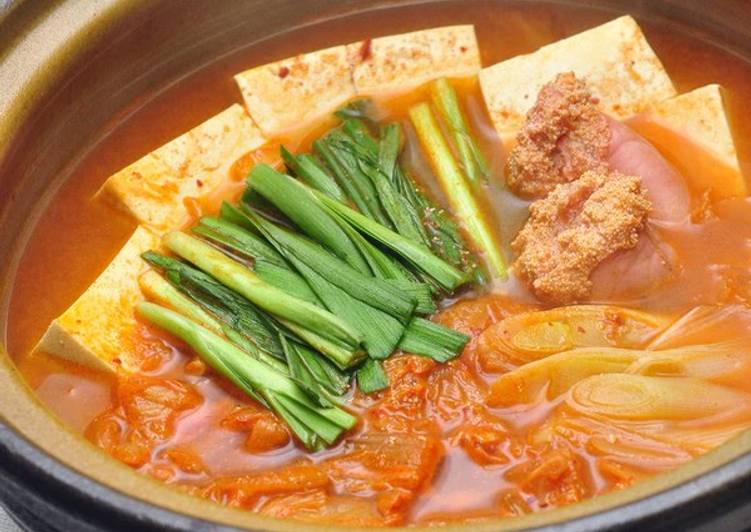Korean Cuisine - Kimchi Jjigae with Tarako. The ultra comforting Korean stew - Kimchi Jjigae recipe! Kimchi Jjigae (김치찌개) also known as Kimchi stew or Kimchi soup is probably the most common way of consuming some aged Kimchi. It is a such a staple food in Korean households that typically Koreans would eat it at least once or twice a week if Heat vegetable oil in a pot, and slowly stir-fry the kimchi including the marinade sauce over medium heat.
 The only thing that motivates me to crawl out of bed most days is the promise of hot Korean food. Jjigae: Must-have Korean meal in the winter Skip to main content Kimchi Jjigae (Stew) is a classic stew in Korean Cuisine that is hard not to love if you like Kimchi. It is made with old over ripe kimchi which may be too sour to enjoy fresh but is wonderful when stewed. You can cook Korean Cuisine - Kimchi Jjigae with Tarako using 7 ingredients and 5 steps. Here is how you cook that.
The only thing that motivates me to crawl out of bed most days is the promise of hot Korean food. Jjigae: Must-have Korean meal in the winter Skip to main content Kimchi Jjigae (Stew) is a classic stew in Korean Cuisine that is hard not to love if you like Kimchi. It is made with old over ripe kimchi which may be too sour to enjoy fresh but is wonderful when stewed. You can cook Korean Cuisine - Kimchi Jjigae with Tarako using 7 ingredients and 5 steps. Here is how you cook that.
Ingredients of Korean Cuisine - Kimchi Jjigae with Tarako
- It's 200 grams of Chinese cabbage kimchi (including the marinade sauce).
- Prepare 1 block of Silken tofu.
- Prepare 2 of Tarako.
- It's 4 of Chinese chives.
- You need 1/2 of Japanese leek.
- It's 1 clove of Garlic.
- It's 1200 ml of Bonito dashi soup stock.
I often buy the Cosmos brand from the store. Add just enough water to cover everything and then add the tofu and mushrooms. The longer it cooks, the better it tastes. To make kimchi jjigae with no meat, follow the same steps leaving out the pork.
Korean Cuisine - Kimchi Jjigae with Tarako step by step
- Heat vegetable oil in a pot, and slowly stir-fry the kimchi including the marinade sauce over medium heat..
- After 3-4 minutes of stir-frying, pour the bonito dashi soup stock into the pot. Add the grated garlic as well, and simmer for 6-7 minutes..
- Cut the tofu into large pieces, and add to the pot..
- Add the tarako as is or cut in half and add to the pot. Cut the Japanese leek on the diagonal into thin slices, and add to the pot..
- Simmer for 2-3 minutes, add the Chinese chives, and turn off the heat..
Korean cuisine has evolved through centuries of social and political change. Originating from ancient agricultural and nomadic traditions in Korea and southern Manchuria, Korean cuisine has evolved through a complex interaction of the natural environment and different cultural trends. Kimchi is a versatile dish that can be eaten on its own or cooked with almost anything. Kimchi / Kimchee (김치) is Korean fermented cabbage and it's an integral ingredient in Korean cuisine. Many Koreans eat kimchi every day if not at every meal!
Comments
Post a Comment